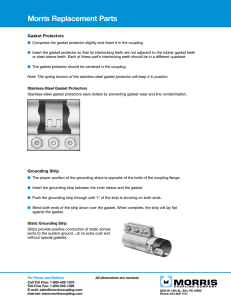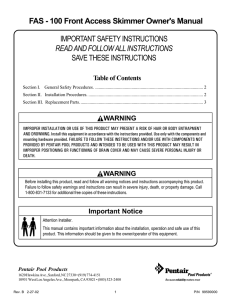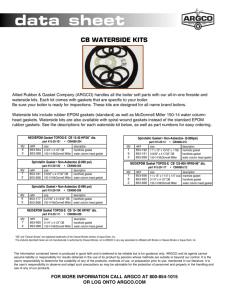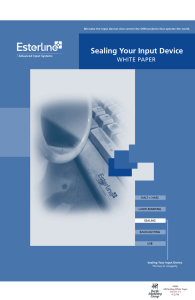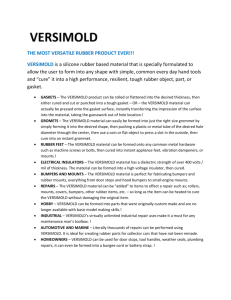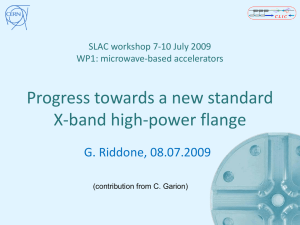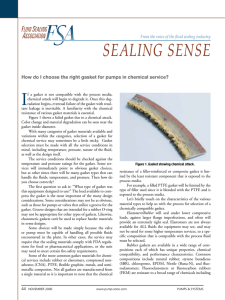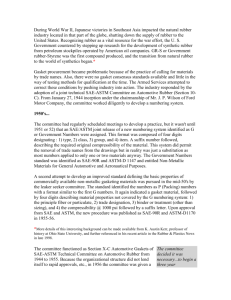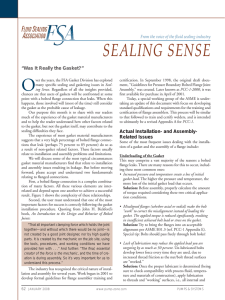Case 1: Engine Block and Head Joint Sealing Assembly
advertisement
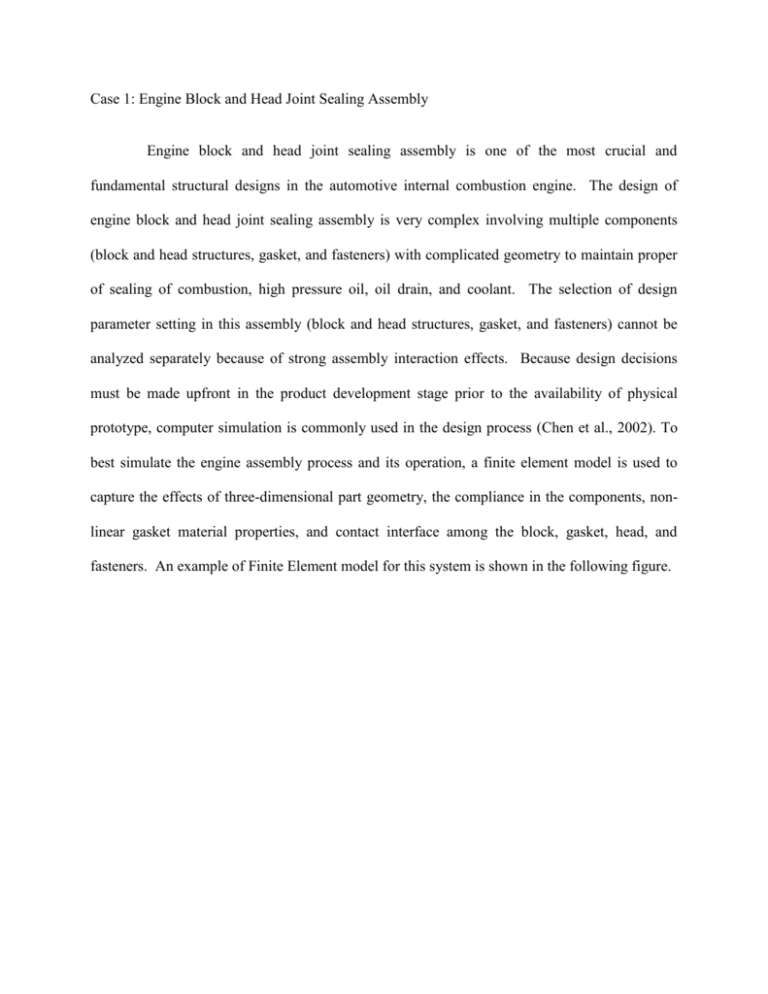
Case 1: Engine Block and Head Joint Sealing Assembly Engine block and head joint sealing assembly is one of the most crucial and fundamental structural designs in the automotive internal combustion engine. The design of engine block and head joint sealing assembly is very complex involving multiple components (block and head structures, gasket, and fasteners) with complicated geometry to maintain proper of sealing of combustion, high pressure oil, oil drain, and coolant. The selection of design parameter setting in this assembly (block and head structures, gasket, and fasteners) cannot be analyzed separately because of strong assembly interaction effects. Because design decisions must be made upfront in the product development stage prior to the availability of physical prototype, computer simulation is commonly used in the design process (Chen et al., 2002). To best simulate the engine assembly process and its operation, a finite element model is used to capture the effects of three-dimensional part geometry, the compliance in the components, nonlinear gasket material properties, and contact interface among the block, gasket, head, and fasteners. An example of Finite Element model for this system is shown in the following figure. Gasket Cylinder Head Cylinder Block Head Bolts Figure 1. Finite Element model of head and block joint sealing assembly. The computer model simulates the assembly process (e.g., head bolt run down) as well as engine operating conditions (e.g., thermal and cylinder pressure cyclical loads due to combustion process). A computer experiment employing uniform design with 27 runs and 8 factors (x1: gasket thickness, x2: number of contour zones, x3: zone-to-zone transition, x4: bead profile, x5: coining depth, x6: deck face surface flatness, x7: load/deflection variation, x8: head bolt force variation) were conducted to optimize the design of the head gasket for sealing function. The small number of runs is necessary due to simulation setup complexity and excessive computing requirements. The objective of the design is to optimize the head gasket design factors (x1-x5) to minimize the "gap lift" of the assembly as well as its sensitivity to manufacturing variation (x6-x8). The data of the experiment is shown in Table 1 where the response variable, y, is the gap lift. x1 2 3 1 3 1 1 1 2 3 2 1 3 3 2 1 3 1 3 1 2 2 2 3 2 2 1 3 x2 2 3 1 1 1 3 3 3 2 1 3 2 3 1 2 1 2 2 2 2 3 3 3 2 1 1 1 x3 3 3 2 2 2 2 1 2 1 1 3 2 1 1 1 3 3 2 1 2 3 2 1 3 1 3 3 x4 2 2 3 1 2 3 2 1 3 2 1 3 3 3 1 2 1 2 2 1 3 2 1 3 1 3 1 x5 2 3 2 2 3 3 1 1 3 1 3 1 2 3 3 3 1 1 2 3 2 2 2 1 1 1 2 x6 1 1 1 2 1 3 2 1 2 3 2 2 1 2 1 3 3 3 3 3 3 2 3 1 1 2 2 x7 2 3 3 3 1 2 3 1 1 1 1 1 2 3 2 2 3 2 1 3 1 2 3 3 2 2 1 x8 3 1 3 1 2 2 3 1 2 3 3 3 3 1 1 3 2 1 1 3 1 2 2 2 2 1 2 y 1.53 2.21 1.69 1.92 1.42 5.33 2.00 2.13 1.77 1.89 2.17 2.00 1.66 2.54 1.64 2.14 4.20 1.69 3.74 2.07 1.87 1.19 1.70 1.29 1.82 3.43 1.91 The main effect plot shown below indicates that gasket thickness (x1) and surface flatness (x6) are the most important factors affecting gap lift. Gap Lift Main Effect Plot x1 x2 x3 x4 x5 x6 x7 x8 2.80 y 2.55 2.30 2.05 1.80 1 2 3 1 2 3 1 2 3 1 2 3 1 2 3 1 2 3 1 2 3 1 2 3 One particular interest in this study is to set gasket design factors so that the effect of manufacturing variations (e.g., surface flatness) are minimized. The interaction plot below shows that when the gasket thickness (x1) is set equal to 2, the gap lift is minimized as well as its sensitivity to surface flatness (x2). Gap Lift Interaction Plot 1 3 2 1 2 3 1 2 3 1 2 3 1 2 3 1 2 3 1 2 3 1 2 x1 3 4 3 2 3 2 1 x2 4 3 2 3 2 1 x3 4 3 2 3 2 1 x4 4 3 2 3 2 1 x5 4 3 2 3 2 1 x6 4 3 2 3 2 1 x7 4 3 2 x8 Chen, T.Y., Zwick, J., Tripathy, B. and Novak, G. (2002), "3D Engine Analysis and MLS Cylinder Head Gaskets Design," Society of Automotive Engineers (SAE) Technical Paper Series 2002-01-0663.

